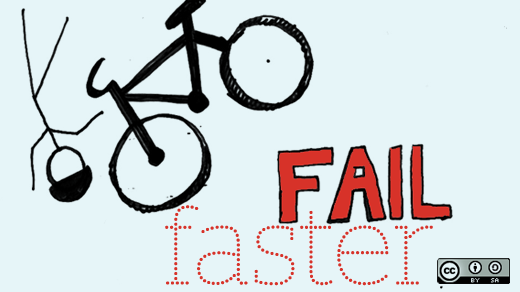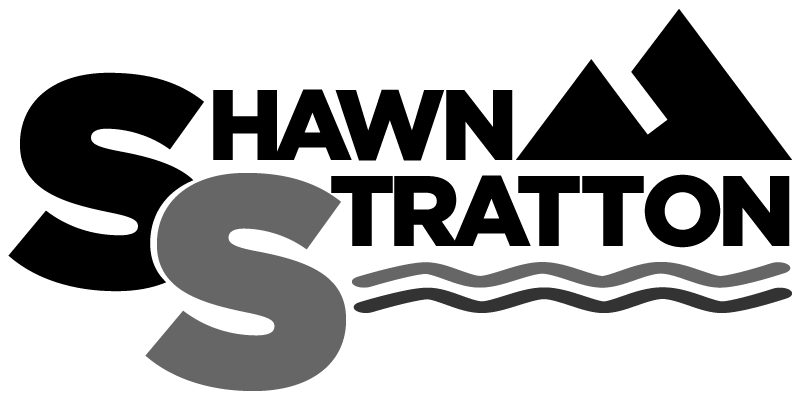
by Shawn Stratton | Apr 6, 2016 | Blog Posts
The older I get, the more I realize how little I know. Between my wife and me, we have 5 coaches in our life right now, focusing on areas of personal and professional development and that’s just the ones we pay. On the surface, it may sound like we are people whose lives are a mess and need a lot of help. Fortunately, it’s the contrary. We have coaches because we are driven people who want to be the best person we possibly can in getting the most out of our careers, talents and passions. Perhaps your life, business, career, and relationships, are already good, but you want it to be much, much better. Coaching isn’t a crisis intervention. Nor is it a substitute for psychotherapy, or advice from a professional, such as an attorney, accountant, or physician. If things are basically good, but you know they could be a lot better and you are ready for that to happen, it’s a great time for you to hire a coach. For example, I am a good runner and can run a respectable marathon time running my own plan but I don’t believe I will reach my full potential without the guidance of an experienced coach. To be the best me, I need a little help and you may as well. There are many types of coaches. There are traditional athletic coaches, executive coaches, life coaches, gardening coaches, nutrition coaches, and dating coaches, the list is endless. There are coaches for just about every aspect of life and hobby in the world. The one thing they have in common is...

by Shawn Stratton | Mar 31, 2016 | Blog Posts
A few years ago Google set up a research team to find out the elements that create high performing teams. What they found and the length of time it took to find it surprised them. For several years they studied over 150 teams working within Google. Many of the senior executives in the company believed that the best teams developed when the best people were put together on a project. After gathering an enormous amount of data, the researcher found it was almost impossible to find meaningful patterns. In an article recently published in the New York Times’ Google’s lead researcher on the project Abeer Dubey stated, ‘‘At Google, we are good at finding patterns. But there weren’t strong patterns here.’’ The people comprising the team didn’t seem to matter. This finding didn’t surprise me. Leading wilderness expeditions for years with new teams, people would often ask me “what do you do if you get a bad team and you are stuck with them for a month in the mountains”. Strangely enough, that was never a concern of mine. As I gained experience leading, I came to realize that leaders play a more significant role in creating effective teams than the people who make up the team. Frustrated with the lack of patterns in the data they collected, the researchers delved further into reviewing past academic studies on how teams work. In the literature, they discovered that psychological and sociological research kept using the term “group norms” when describing successful groups. Norms are the traditions, behavioral standards and unwritten rules that govern how we function when we gather. It...

by Shawn Stratton | Mar 23, 2016 | Blog Posts
“When the best leader’s work is done, the people say, ‘We did it ourselves’.” Lao Tzu I had reached my limit with a team member. I had tried everything to integrate him into the team and become a productive team player. His disruptive behaviour had gone on for weeks and was threatening to derail the expedition. I decided the only option left was to remove him from the team but I had no authority to do so. Chatting with many project managers and team leaders, I am often asked the question “how do you lead with little or no authority”. The quick and easy answer to this potential complex question is “the same way you would lead with authority”. If leadership is performed correctly, little authority should be needed. Increasingly today, projects and events are undertaken in environments where the leader had little formal authority. Significant portions of project work are done by contributors who work for other managers, often for a different company. Project and event managers have high expectations placed on them, demanding a high level of leadership. They are looked to as the go to person to see a project from beginning to end and have all the right processes, metrics and people in place that will allow for successful completion. There are many ways to lead when you have little or no authority, here are 3 of them: (RELATED – Why Teams Truly Succeed or Fail One Relationship at a Time) 1. Metrics: “If you don’t measure something, you can’t change it. The process of leadership is one of painting a vision, then saying how...

by Shawn Stratton | Mar 16, 2016 | Blog Posts
When pride is present at work, it inspires individuals and teams to achieve more, communicate better, and build upon each other’s strengths. When it’s not present, it can get ugly, really ugly. Most successful teams carry a high level of pride to the work they do and whom they do it with. But as a leader, how do you create pride within a team. Surely it is not a given any time a team forms to take on a significant goal. Pride for a team or organization has to deliberately be developed and massaged by the leadership. It comes from a conscious effort and genuine love of the team and its purpose. Pride helps people enthusiastically do their job and get through hard times. I always saw that developing pride within an expedition team was an integral part of my role as an expedition leader. During the extended backcountry expeditions I led, I would be getting my clients and students to regularly push their comfort zone mentally and physically while challenging their tolerance for adversity and uncertainty. No, these moments didn’t happen every day but when they did come about I needed the team members to feel the pride in what they were trying to accomplish and who they were doing it with to launch themselves into challenging situations. It could have been have a 4am wake up to accomplish a long sea kayak day before the winds picked up at noon. Or packing up wet tents in near freezing temperatures and hiking late into the night so we could reach the lake in time to meet the floatplane...

by Shawn Stratton | Mar 9, 2016 | Blog Posts
You know what it is like to hide behind a weakness. We all have them and many of us try to hide them at all costs when you are trying to impress workplace leaders or perhaps just keep your job. Everyone on the team you are leading right now has plenty of weaknesses. The good thing is that they don’t usually affect their job performance because their role has them working in an area of strength or they have learned to compensate for their limitations in some way. In a recent webinar I was conducting on trust building, a participant asked, “How should we deal with weaknesses?” She was referring to addressing the weaknesses of team members and unfortunately there wasn’t a quick and easy answer for her so I have decided to write about it here. Years ago when I was backpacking around New Zealand, I got a job in an apple orchard picking apples. A few weeks prior I was working in a mandarin orange orchard, working a job that had me ‘thinning’ the mandarins, which means picking a few off each branch so the others had room to grow. Having previous picking experience, I figured apple picking couldn’t be that hard and there was a chance to make more money as I was paid by the bin full. I was fit and not afraid of hard work. I was going to cash in. I was surprised to learn on the first day of my job that apple picking wasn’t just about hauling your ladder up to the tree and picking all the apples off as fast...

by Shawn Stratton | Mar 3, 2016 | Blog Posts
The main reason poor performers persist within teams is their leaders are scared to talk to them about their performance concerns. You don’t want to hurt their feelings, get into an argument, or have them take revenge on you or the team. It can be an uncomfortable situation for everyone involved. Here are 5 tactics to initiate the conversation to get the dialogue off to a productive start: Schedule Regular Check-Ins: Feedback and feedforward (The Ultimate Feedback Technique of Today’s Leaders) needs to happen on a regular basis to be effective. Daily or weekly check-ins with direct reports is ideal. Having regular check-in builds the relationship and allows the feedback process to become a normal part of your interactions. Randomly calling people into a meeting to deliver constructive feedback will start to build an apprehensive feeling within the team anytime you ask for a one-on-one meeting. Ask for Self-Evaluation: The easiest and one of the most effective ways to initiate a conversation about poor performance is to have the person identify the area of poor performance by asking them key questions such as “how do you feel you are performing in so and so areas”. Most times people are aware of their lack of performance and will give an explanation. Their self-evaluation and explanation may not be totally accurate from your perspective but that’s ok for now. The conversation has been started with you taking on the non-aggressive role of a learner. Tip the Balance – Don’t Sandwich: In any feedback conversation, there needs to be more positive constructive feedback delivered (yes, even for poor performers). A base...

by Shawn Stratton | Feb 25, 2016 | Blog Posts
As a leader, you set goals (at least I hope you do). If you are a really good leader, you write your goals down and perhaps tell a few people about them for accountability. But even the most outstanding leaders don’t achieve all their goals. So, then what happens to those unachieved goals? Are unachieved goals recycled, forgotten about, or unimportant? Is goal setting really all about shooting for the stars and be happy with the moon type of thinking? Sometimes, my tendency for literal thinking takes over and I feel every list and goal needs a checkbox next to it indicating whether you completed it or not. Well I have realized over the years that goals don’t have to be literal as great learning and growth can be achieved without completing 100% of the goal. As the famous quote says “it’s not about the destination, it’s the journey”. I know this is a cliché but it is actually true in the pursuit of goal achievement. The goals you set and the rewards you achieve in reaching them are merely the carrot (or ice cream) that takes you on the journey. The journey is where the growth happens, but without the goal, the journey often never happens. Easy examples of the journey being more important than the goal come from my mountaineering expeditions and running marathons. When I tried to climb Mt. Logan, Canada’s highest mountain at 19,551 ft., I fell just short of the goal of standing on the summit of Canada. After 21 days of climbing, our team decided to stop 500 ft. short of the summit....

by Shawn Stratton | Feb 18, 2016 | Blog Posts
Failing sucks! There is nothing fun about it and no one wants to be apart of it. But the sucking part of it doesn’t need to last and many times failure leads to the biggest and best breakthroughs. Admitting a mistake shows you are wiser than you once were, don’t be afraid to admit. I have failed many times and I am sure will fail many more, only in the future I hope to fail faster so I can learn from the experience and move on to the next goal. Too often we let failure drag itself out over months if not years. You may be leading a project you believe is doomed from the beginning for a multitude of reasons or you could be in a leadership position that you are not the right fit for because of your experience level and interest. It is human nature not to want to admit failure so we push on; enduring sub par performance and results with the fleeting hope things will work out. I am not telling you not to stretch yourself and push your comfort zone taking on challenging projects, positions and goals. What I am suggesting is that as you stretch yourself or dive into leading challenging projects you set realistic boundaries that, if crossed, lead you to admit failure. This could be a date, a dollar figure, closure of a knowledge gap, level of progress. The faster you admit failure the faster you can learn from the experience and move on to inching your way to success. Proper failure is a speed bump, useless failure is a...

by Shawn Stratton | Feb 12, 2016 | Blog Posts
Where Do You Keep The Ketchup? Have you have struggled with the diversity vs. skill debate when building and working in teams? I know I have, along with countless Human Resource managers. Why can teams find better solutions than brilliant individuals working alone? And why are the best group decisions and predictions those that draw upon the qualities that make each of us unique? The answers lie in diversity: not what we look like outside, but what we look like within, our distinct tools and abilities. On a recent Reply All podcast, a form of diversity unrelated to race, gender or age was discussed: the diversity of thought. It turns out diversity of thought may be the most important factor a team faces with solving problems. Unfortunately, as Lauren Rivera from the Kellogg School of Management points out in her research, managers like to hire people like themselves, leading to little diversity of all sorts in the workplace. Scott Page, Professor of Complex Systems at the University of Michigan, has been researching the diversity of thought for years. He highlighted much of his research in his book The Difference: How the Power of Diversity Creates Better Groups, Firms, Schools, and Societies. It turns out diversity of thought is even more important than all other types of diversity. His research discovered groups that display a range of perspectives outperform groups of like-minded experts. Diversity in a team yields superior outcomes and collective wisdom exceeds the sum of its parts. Moving beyond the politics that cloud standard debates about diversity, he explains why difference beats out homogeneity, whether you are talking...

by Shawn Stratton | Feb 4, 2016 | Blog Posts
As a leader, people come to you with problems weekly, daily and in some unfortunate cases hourly. Is this your fault, their fault or the system’s? Wouldn’t it be better if the person with the problem delivered a solution or at least a potential solution at the same time? Fortunately, you can have some control over this problem parade. You just need to role model and insist that your teams adopt the “Don’t Bring the Problem without a Solution” philosophy. I was recently hired a consultant on a website project and like most projects things weren’t always turning out as expected. I am sure there were many minor hiccups I didn’t hear about but when there was a fairly major problem that could potentially cost me more than originally anticipated, the consultant came to me to address the issue. As the conversation started out, I was becoming more frustrated picturing a further delay and increased cost of the project, or worst a problem he couldn’t fix. As he continued with his explanation, I became pleasantly surprised that after he finished telling me about the problem, he went into not only one but two potential solutions. This response left me going from frustrated and disappointed to impressed and optimistic. How Can You Get Your Team To Take On The “Don’t Bring The Problem Without A Solution” Approach? It starts with you! Like most things in leadership, if you want your people to adopt or maintain a behavior, they need to see you role modeling it consistently. As a leader, you are probably coming up with solutions to problems all the...

















